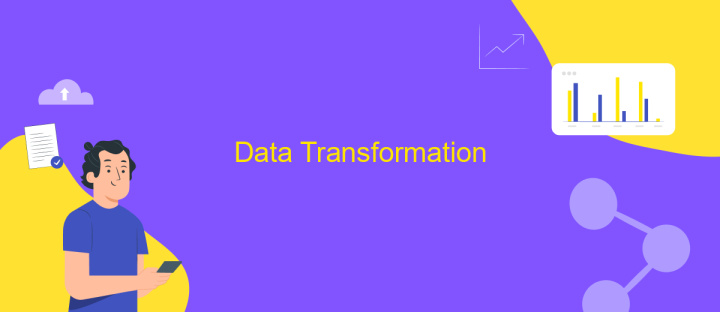Environmental Data ETL
Environmental Data ETL (Extract, Transform, Load) is a crucial process in managing and utilizing environmental data. This article explores the methodologies and technologies used to efficiently extract raw data from various sources, transform it into a usable format, and load it into systems for analysis. Understanding ETL processes helps organizations make informed decisions to address environmental challenges and promote sustainability.
Introduction
Environmental Data ETL (Extract, Transform, Load) is a critical process for managing and utilizing environmental data effectively. This process involves extracting data from various sources, transforming it into a suitable format, and loading it into a target system for analysis and decision-making. The increasing importance of environmental data in addressing climate change, pollution, and resource management necessitates efficient ETL processes.
- Extract: Gathering data from diverse sources such as sensors, databases, and APIs.
- Transform: Converting data into a consistent format, cleaning, and enriching it.
- Load: Importing the transformed data into a data warehouse or analytical tools.
Modern ETL tools and services, such as ApiX-Drive, streamline the integration of environmental data from multiple sources, automating the process and ensuring data accuracy. ApiX-Drive offers seamless connectivity between different platforms, enabling organizations to efficiently manage their environmental data workflows. By leveraging such tools, organizations can focus on analyzing data to make informed decisions for sustainable development.
Data Acquisition

Data acquisition for environmental ETL processes involves the systematic collection of raw data from various sources, such as sensors, databases, and APIs. The quality and relevance of the data are crucial for accurate analysis and decision-making. Therefore, it is essential to establish reliable connections to data sources and ensure the data is up-to-date and accurate. This often requires using specialized tools and technologies that can handle large volumes of data and support real-time data collection.
One effective way to streamline data acquisition is through the use of integration services like ApiX-Drive. ApiX-Drive allows users to automate data collection by connecting various data sources without the need for extensive coding. This service supports a wide range of environmental data sources and can be customized to fit specific requirements. By leveraging such integration platforms, organizations can significantly reduce the time and effort required for data acquisition, ensuring a more efficient and accurate ETL process.
Data Transformation

Data transformation is a critical phase in the ETL process, where raw environmental data is converted into a format suitable for analysis. This step involves cleaning, normalizing, and structuring the data to ensure it is accurate and useful. Leveraging automated tools and services can significantly streamline this process, making it more efficient and less error-prone.
- Data Cleaning: Remove duplicates, handle missing values, and correct errors in the dataset.
- Data Normalization: Standardize data formats and units to ensure consistency across the dataset.
- Data Structuring: Organize data into a structured format, such as tables or JSON, for easier analysis.
Using integration services like ApiX-Drive can further enhance the data transformation process. ApiX-Drive allows seamless integration of various data sources and automates many of the transformation tasks, reducing manual effort and increasing accuracy. By leveraging such tools, organizations can ensure their environmental data is ready for insightful analysis and decision-making.
Data Loading

Data loading is a crucial phase in the Environmental Data ETL process, involving the transfer of processed data into a target system, such as a data warehouse or a data lake. This step ensures that the cleaned and transformed data is readily available for analysis, reporting, and decision-making.
During the data loading phase, it is essential to ensure data integrity and consistency. Properly configured data pipelines and integration tools play a vital role in achieving this. One such tool is ApiX-Drive, which facilitates seamless integration between various data sources and target systems, reducing manual effort and minimizing errors.
- Configure data pipelines for automated data transfer.
- Ensure data validation and consistency checks.
- Utilize ApiX-Drive for efficient data integration.
- Monitor the loading process for any discrepancies.
By leveraging robust data loading practices and tools like ApiX-Drive, organizations can maintain high data quality and reliability. This, in turn, supports effective environmental data analysis and informed decision-making, ultimately contributing to better environmental management and sustainability efforts.
Data Analysis and Visualization
Data analysis and visualization are crucial steps in transforming raw environmental data into actionable insights. By applying statistical methods and machine learning algorithms, we can uncover patterns and trends that inform decision-making processes. Visualization tools like Tableau, Power BI, and Python libraries such as Matplotlib and Seaborn enable us to create interactive and informative charts, graphs, and dashboards. These visualizations help stakeholders understand complex data sets and identify key environmental indicators, such as air quality levels, temperature fluctuations, and pollution sources.
Integrating various data sources can be a complex task, but services like ApiX-Drive simplify this process. ApiX-Drive allows seamless integration of multiple APIs, automating data collection from different platforms. This ensures that our data analysis is comprehensive and up-to-date. Once the data is integrated and processed, visualization tools can be used to present the findings in a user-friendly format. This holistic approach to data analysis and visualization not only enhances our understanding of environmental data but also supports proactive measures for environmental conservation and sustainability.
FAQ
What is Environmental Data ETL?
Why is ETL important for environmental data?
What types of environmental data can be processed using ETL?
How can I automate the ETL process for environmental data?
What are some challenges in Environmental Data ETL?
Apix-Drive is a simple and efficient system connector that will help you automate routine tasks and optimize business processes. You can save time and money, direct these resources to more important purposes. Test ApiX-Drive and make sure that this tool will relieve your employees and after 5 minutes of settings your business will start working faster.

